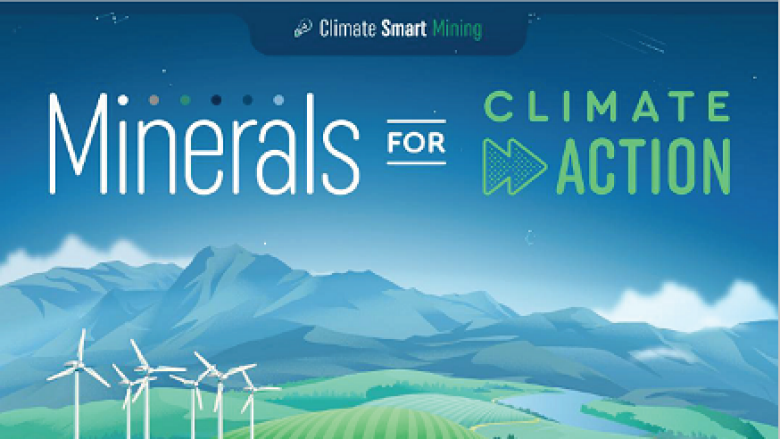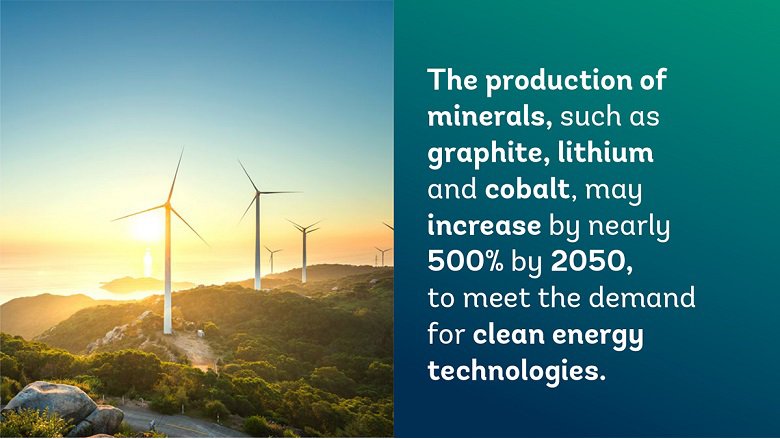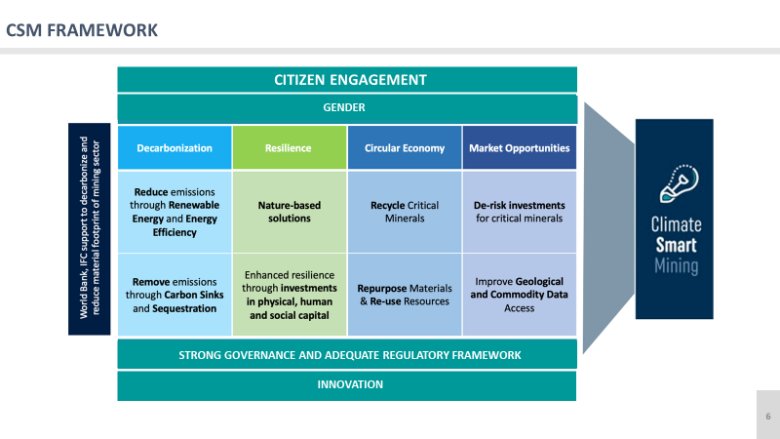Overview
A new World Bank Group report, "Minerals for Climate Action: "The Mineral Intensity of the Clean Energy Transition," finds that the production of minerals, such as graphite, lithium and cobalt, could increase by nearly 500% by 2050, to meet the growing demand for clean energy technologies. It estimates that over 3 billion tons of minerals and metals will be needed to deploy wind, solar and geothermal power, as well as energy storage, required for achieving a below 2°C future.
This follows the World Bank's 2017 report, “The Growing Role of Minerals and Metals for a Low Carbon Future”, which concluded that to realize a lower-carbon future there will be a substantial increase in demand for several key minerals and metals to manufacture cleaner energy technologies.
In other words, the clean energy transition will be significantly mineral intensive.
And while the growing demand for minerals and metals provides economic opportunities for resource-rich developing countries and private sector entities alike, significant challenges will likely emerge if the climate-driven clean energy transition is not managed responsibly and sustainably.
The Climate-Smart Mining Initiative will help resource-rich developing countries benefit from the increasing demand for minerals and metals, while ensuring the mining sector is managed in a way that minimizes the environmental and climate footprint.
The initiative supports the sustainable extraction and processing of minerals and metals to secure supply for clean energy technologies by minimizing the social, environmental, and climate footprint throughout the value chain of those materials by scaling up technical assistance and investments in resource-rich developing countries.




